Plastic pollution art highlights risk to world's oceans
- Published
Photographer Mandy Barker has spent more than 10 years creating images of marine debris to raise awareness about plastic pollution in the world's oceans.
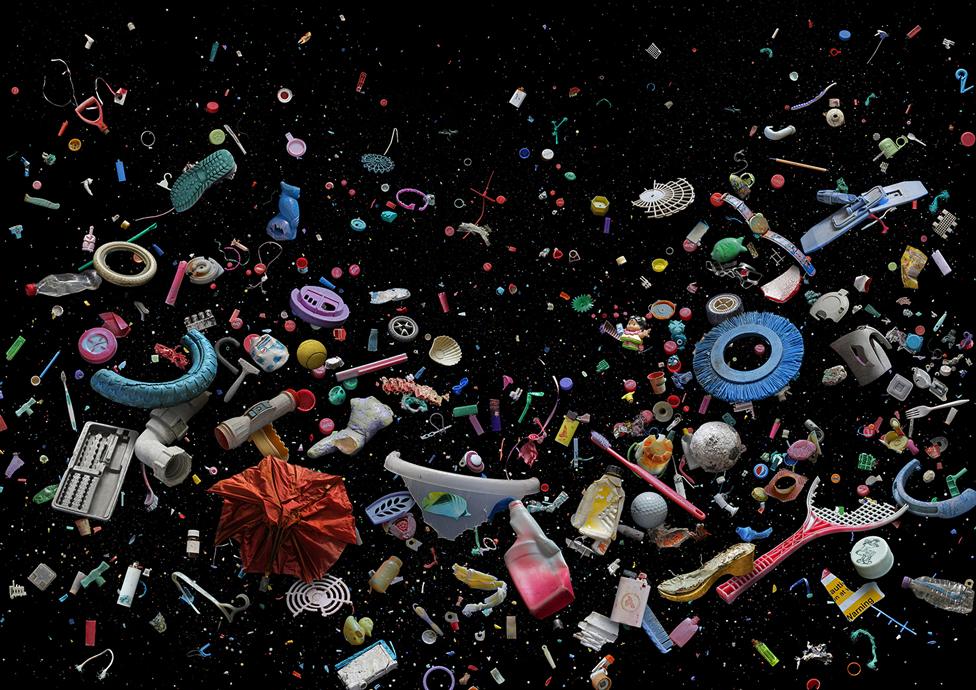
Where No One Wears a Watch is created from marine plastic recovered from beaches and islands around the Inner Hebrides, off the west coast of mainland Scotland
"I was first inspired to begin photographing plastic debris back in 2009, when I noticed my local beach was looking more like a rubbish tip than a nature reserve," she says.
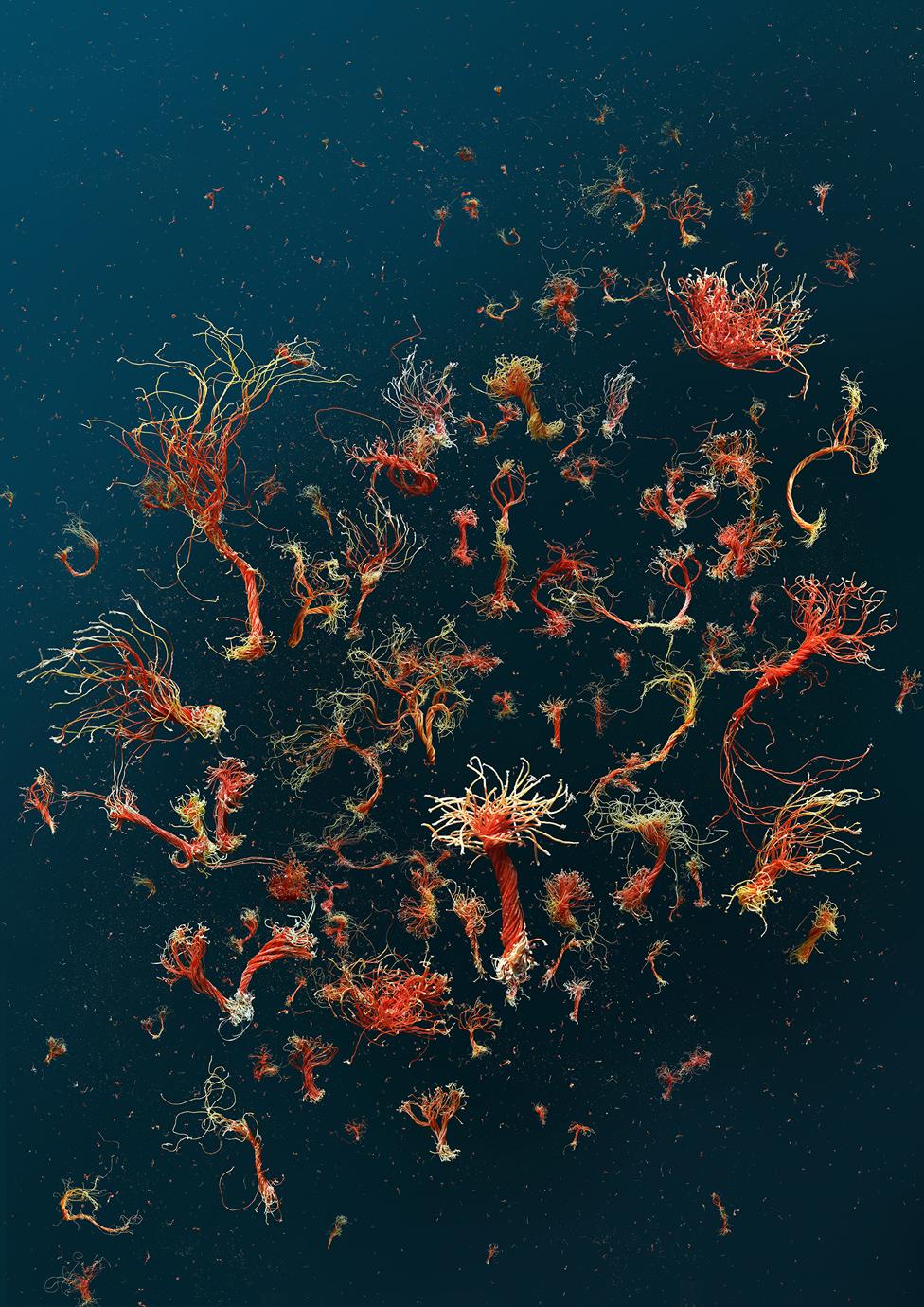
Barcode, from the series Shelf-Life, consists of small pieces of fishing net. The series aims to raise awareness of plastic pollution washed up on the remote Henderson Island, in the south Pacific
It is estimated that more than eight million tonnes of plastic enter the world's oceans each year.
The debris poses a number of dangers to marine ecosystems - such as entangling or being ingested by sea creatures.

Burnt, from the series Soup, depicts plastics that have been salvaged from beaches around the world
Barker photographs the salvaged objects against a dark background, which she takes on trips to the shore, with additional photography taking place in her studio.
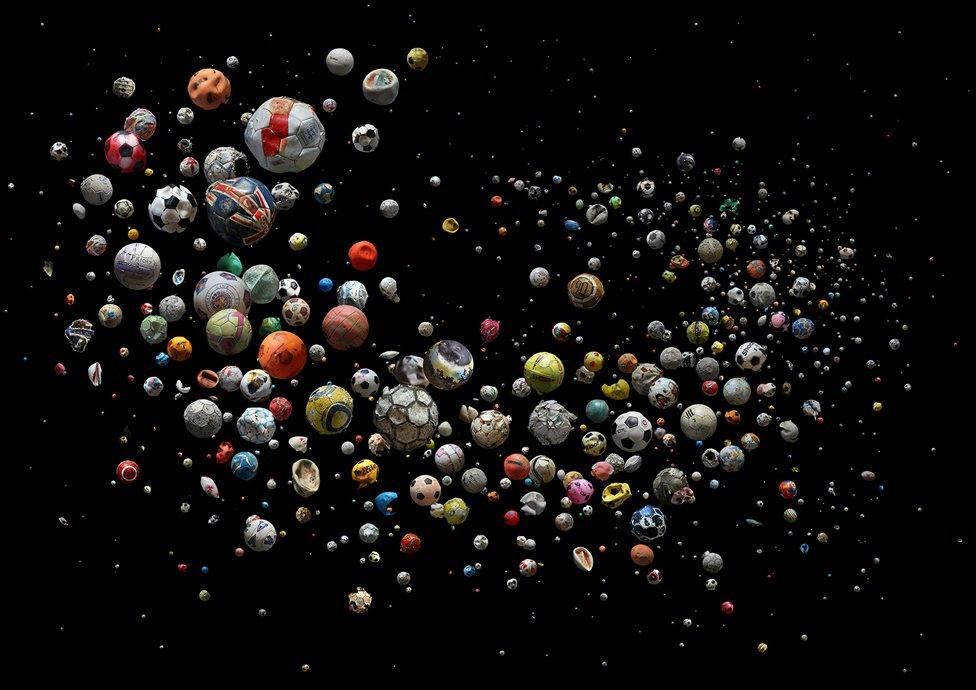
This image, from a series called Penalty, consists of 597 marine debris footballs that were collected by volunteers over four months, from 87 different beaches in the UK
"I shoot the smaller items first, which I throw randomly on to the background, followed by medium and larger-sized pieces.
"These layers are then sandwiched together, creating the illusion of the objects being suspended."
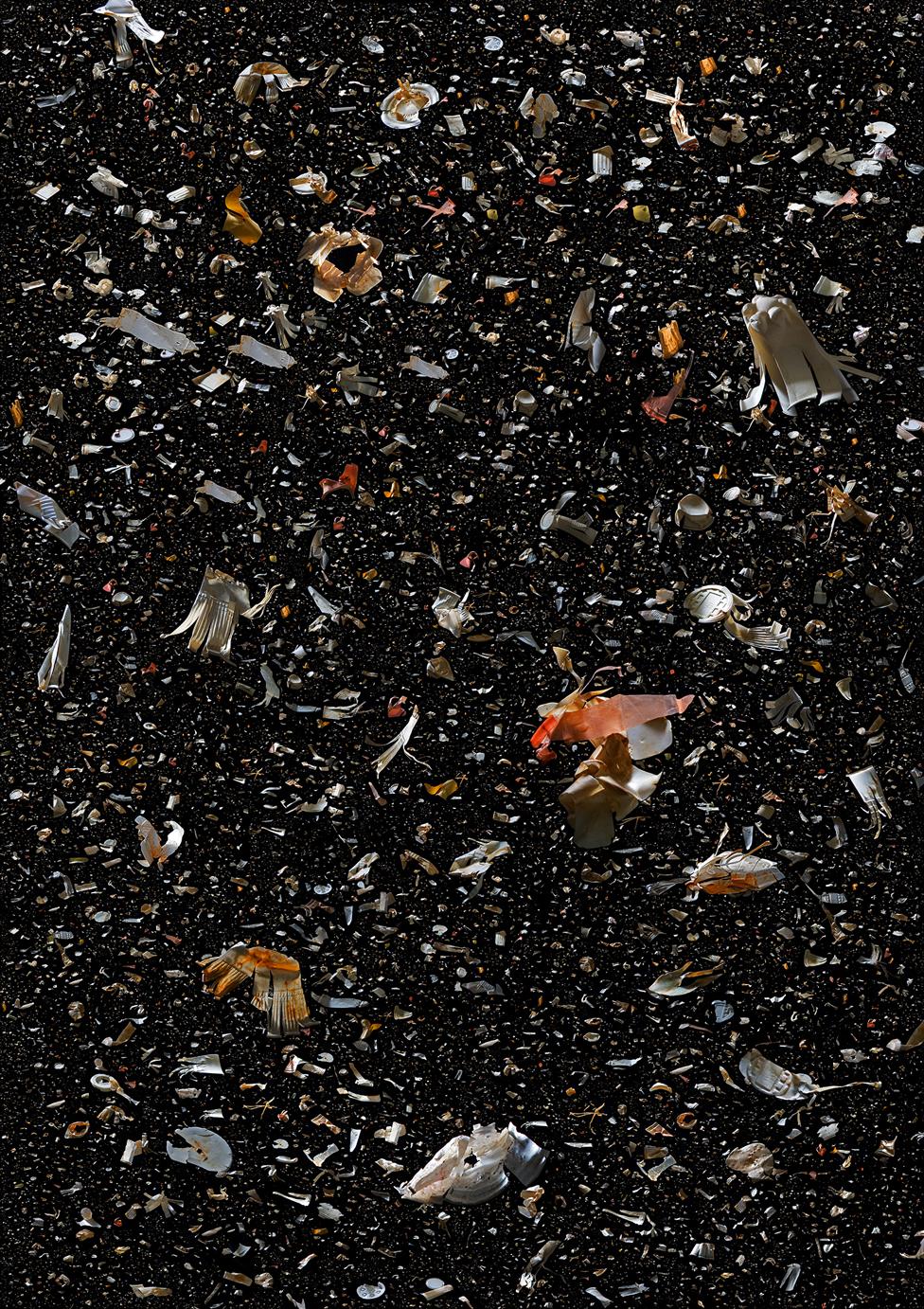
Fragmented Cups, from the series Soup
Barker's work has been exhibited around the world, and used to illustrate academic and scientific research papers on plastic research.
She was recently invited to speak on the subject at the opening session of EU Greenweek 2021.
"By working with scientists, I can represent their research through art - almost giving science a 'visual voice' - to attract people to read about the issue, when perhaps they would not normally have been drawn to it," she says.
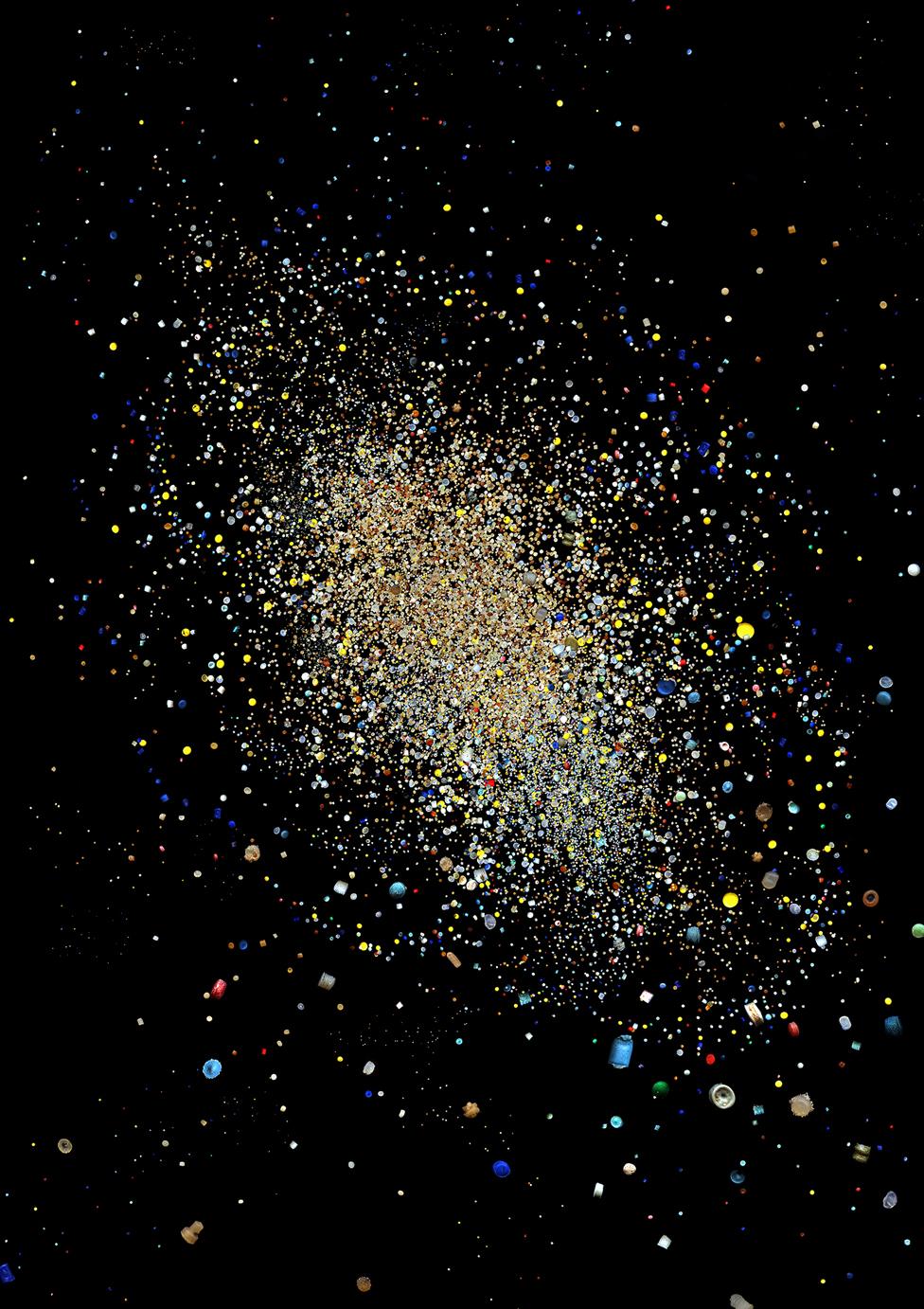
Plastic pellets, also known as nurdles, collected from six different beaches
"Raising awareness about marine plastic pollution is something I have now dedicated my life to representing.
"I aim to highlight the harmful effect on marine life and ourselves, ultimately leading the viewer to take action."

Bird's Nest, from the series Soup. The image is created from discarded fishing lines that have formed nest-like balls due to tidal oceanic movement
Mandy Barker's, external work is currently on exhibition as part of the Belfast Photo Festival, external at Donegall Quay, Belfast, until 30 July 2021.